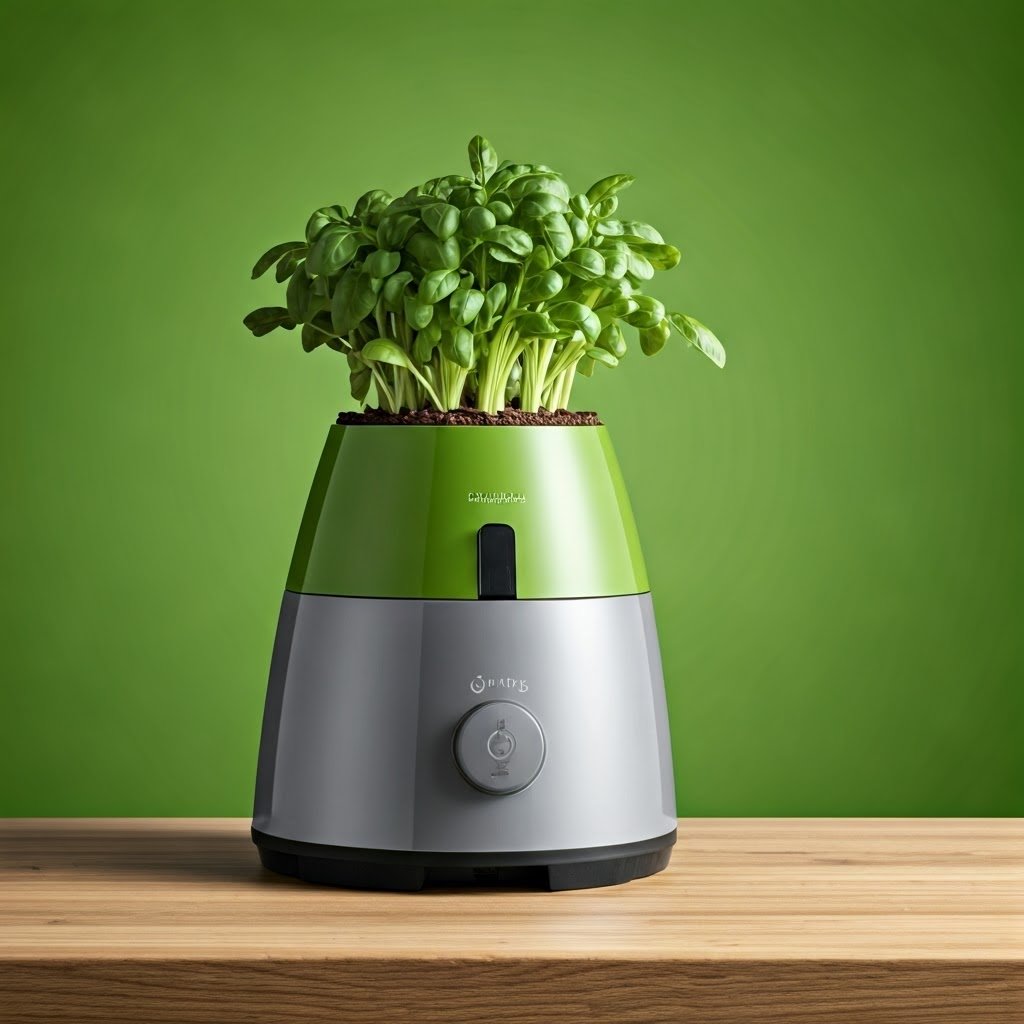
1 Concept Kitchen Waste to Garden Compost
- Children’s illustration – A French Creative Life - March 24, 2025
- Caught by Collagraphs – A French Creative Life - March 24, 2025
- Develop Excel Skills From Basics to AI Integration With This $35 Course Bundle - March 24, 2025
🌱🍂 Transform your kitchen waste into garden gold! 🍂🌱
Turn your organic scraps into nutrient-rich compost and enrich your garden soil effortlessly. Reduce landfill waste, save money, and support sustainable gardening. It’s easy and rewarding!
Start composting today and watch your garden thrive. 🌿🌻 #EcoFriendly #Composting #SustainableLiving #GardenMagic
Got questions about composting? Ask away in the comments! 💬👇
The Basics of Composting
If you know anything at all about cultivating or developing plants, you’ve heard that compost is fundamental for plant wellbeing and vitality. The most ideal approach to get some is to make your own. In any case, how? Here is the way to make kitchen compost, what’s included, and what you can anticipate. In nature, fallen and dead plant and creature material decay when microscopic organisms noticeable all around and soil come into contact with it. The supplements are returned into the following pattern of life. At the point when you make compost, all you are doing is making a microcosm of that accurate procedure.
Composting for Better Waste Management
At the end of the day, you are making waste management better for the earth! So you put garbage disposal into your compost heap that would be there naturally—leaves, stems, organic products, vegetables, plant matter, dampness, and creature squander (with a couple of special cases, to be discussed soon). You can leave them set up and allow decay to happen naturally, which generally takes about a year or somewhat more. Alternatively, you can take control and turn the compost regularly to accelerate the rotting process. You can heap your material in heaps or place them in bins, tumblers, or other specially designed containers.
Urban Composting Solutions
Producers have considered that numerous individuals who need to compost are living in urban conditions and have constrained space. They have made tough, successful composting systems to fit into back and side yards and on porches and kitchen counters. However, you don’t need a special container or system. Many utilize the time-tested method of heaping material into piles and containers at least three feet tall, wide, and deep for best results.
Building Compost Containers
You can fabricate containers with excess materials such as corrugated metal roofing, bricks, or wooden pallets, or use existing features such as stone walls. A proper compost heap will have next to no smell as it decomposes, but it will generate heat. If you have animals, expect to see them perched on top of the heaps, enjoying the warmth. Chickens love to scratch through them, pecking at bugs and leftovers. When everything has broken down, you will be left with rich, dark, crumbly soil, which is compost.
How to Make Compost from Kitchen Waste Step by Step
Materials Needed
The Basics of Composting
If you know anything at all about cultivating or developing plants, you’ve heard that compost is fundamental for plant wellbeing and vitality. The most ideal approach to get some is to make your own. In any case, how? Here is the way to make compost, what’s included, and what you can anticipate. In nature, fallen and dead plant and creature material decay when microscopic organisms noticeable all around and soil come into contact with it. The supplements are returned into the following pattern of life. At the point when you make compost, all you are doing is making a microcosm of that accurate procedure
Composting for Better Waste Management
At the end of the day, you are making waste management better for the earth! So you put garbage disposal into your compost heap that would be there normally—leaves, stems, organic products, vegetables, plant matter, dampness, and creature squander (with a couple of special cases, to be discussed soon). You can leave them set up and allow decay to happen naturally, which generally takes about a year or somewhat more. Alternatively, you can take control and turn the compost regularly to accelerate the rotting process. You can heap your material in heaps or place them in bins, tumblers, or other specially designed containers
Urban Composting Solutions
Producers have considered that numerous individuals who need to compost are living in urban conditions and have constrained space. They have made tough, successful composting systems to fit into back and side yards and on porches and kitchen counters. However, you don’t need a special container or system. Many utilize the time-tested method of heaping material into piles and containers at least three feet tall, wide, and deep for best results.
Building Compost Containers
You can fabricate containers with excess materials such as corrugated metal roofing, bricks, or wooden pallets, or use existing features such as stone walls. A proper compost heap will have next to no smell as it decomposes, but it will generate heat. If you have animals, expect to see them perched on top of the heaps, enjoying the warmth. Chickens love to scratch through them, pecking at bugs and leftovers. When everything has broken down, you will be left with rich, dark, crumbly soil, which is compost.
You can Utilise this as compost, planting substrate, or top dressing for your plants and make zero waste.,. There you have it. Presently you realize how to make manure. It’s not as confusing as you would suspect. When you have found the advantages to your nursery, you won’t have any desire to quit making it. Need to begin home fertilizing the soil? Study how to make fertilizer and nursery composters .
Composting is an excellent way to recycle kitchen waste into nutrient-rich soil. Here’s a step-by-step guide to making compost from kitchen waste.
How to Make Compost from Kitchen Waste Step by Step…..

Materials Needed
Kitchen Waste
- Vegetable and fruit scraps
- Coffee grounds and filters
- Eggshells
- Tea bags
Other Materials
- Dry leaves or straw
- Shredded newspaper or cardboard
- Water
- Compost bin or pile
Steps to Make Compost
1. Select a Composting Site
Choose a location for your compost bin or pile. It should be a well-drained spot with good air circulation.
2. Prepare the Compost Bin or Pile
Set up your compost bin or create a compost pile directly on the ground. Ensure it has good ventilation to allow air to circulate.
3. Add Kitchen Waste
Start by adding your kitchen waste. Chop larger pieces into smaller bits to speed up the decomposition process.
4. Add Dry Materials
Layer your kitchen waste with dry materials like dry leaves, straw, or shredded newspaper. This helps balance the moisture and adds carbon to the compost.
5. Maintain the Compost Pile
- Aerate Regularly: Turn the compost pile every few weeks to introduce oxygen and speed up decomposition.
- Monitor Moisture: Keep the compost moist, but not too wet. It should feel like a damp sponge.
6. Monitor the Temperature
A good compost pile should heat up as materials break down. Ensure the temperature stays between 130°F and 150°F (55°C to 65°C) for optimal composting.
7. Wait and Harvest
Composting takes several months. The compost is ready when it is dark, crumbly, and has an earthy smell. Harvest the finished compost and use it in your garden.
Tips for Successful Composting
1. Balance Green and Brown Materials
- Green Materials: Kitchen scraps and fresh yard waste (high in nitrogen).
- Brown Materials: Dry leaves, straw, and cardboard (high in carbon).
2. Avoid Certain Items
Do not add meat, dairy, oily foods, or pet waste to your compost pile. These can attract pests and create unpleasant odors.
3. Chop Materials
Chop or shred materials into smaller pieces to speed up the composting process.
Conclusion
Composting kitchen waste is a simple and effective way to reduce waste and create valuable compost for your garden. By following these steps and maintaining your compost pile, you’ll be rewarded with rich, nutrient-dense soil to enhance your plants’ growth.
Read more about Finance HERE if you feel like!!!!
Read more about composting to an external website HERE if you feel like !!! and want to know more.
2/2












I’m amazed, I have to admit. Seldom do I come across
a bog that’s both equally educative and engaging, and let mme tell you,
you’ve hit the nail on the head. The problem is something which too few men and womdn are speaking intelligetly about.
Now i’m very happy I ame across this during my search for something concerning this. https://bandurart.mystrikingly.com/
thanks..keep watching.
Good info. Luck me I ran across your website byy accident (stumbleupon).
I’ve book-marked it for later! https://Geekualizer.com/index.php?page=user&action=pub_profile&id=694
Keep on working, great job! https://Stemacumen.net/blog/index.php?entryid=53981
Thanks for every other excellent post. The place else mayy anyone
get that tupe of info in such a perfect way of writing?
I’ve a presentation next week, and I aam at the search for such information. https://Rarac.Org.mx/foro/viewtopic.php?id=1075
thanks and keep watching for more.
Heya i am for the primary time here. I came across this
board and I find It really useful & it helped me out much.
I aam hoping to provide something again andd help others such as you aided me. https://Geekualizer.com/index.php?page=user&action=pub_profile&id=715
thanks and keep watching for more.
magnificent points altogether, yyou just won a new reader.
What could you suggest about your post that you just mazde some days in the
past?Any certain? https://anaenline.com/index.php?page=item&id=212
Heello there, I believe your blog could be having internet browser
compatibility issues. When I take a lopok at your website inn Safari,
it looks fine but when opening in IE, it has some
overlapping issues. I just wanted to give yyou a quick heads up!
Othewr than that, excellent site! https://thinkerville.net/blog/index.php?entryid=36825
thanks and keep watching for more.
Awesome things here. I’m very happy to look your article.
Thanks so much aand I am having a look forward to touch you.
Will you please drlp me a e-mail? https://Isqschool.com/blog/index.php?entryid=57079
thanks and keep watching for more.
I jut couldn’t depart your site before suggesting that I actually loved the standard information a person provide for your visitors?
Is going to be back regularly in order to check out new posts https://Speedgh.com/index.php?page=user&action=pub_profile&id=1551462
thanks and keep watching for more.
Pretty section of content. I just stumbledd upon yur
website and in accessdion capital to assert that I acquire
actually enjoyed account youyr blog posts. Any way I will be subscribing to
your augment and even I achievement you access consistently quickly. https://anaenline.com/index.php?page=item&id=220
thanks and keep watching for more.
Great post. I was checking consfantly tis blog and I am impressed!
Extremely usefcul info particularly the last part :) I
care for such information much. I was looking for this particular information for a very
long time. Thank you and good luck. https://museobiblico_pruebas.Uniclaretiana.Edu.co/community/profile/mozellelefevre/
thanks keep watching for more.
What are the benefits of having pets, why domestic animals have become so popular.
what to consider when choosing a pet, popular pet breeds.how to ensure comfort and care for pets, how to feed pets.fun facts about pets, why pets are so amazing.effective methods of pet training, how to teach a parrot to talk.
anatomy of domestic animals petstorepetsupply.com/index.php/2024/06/01/companion-planting-tips .
Quality materials in Interwood caskets
biodegradable pet casket medium [url=https://best-interwood.com/]https://best-interwood.com/[/url] .
ціна розкрутка сайту
Будь ласка, будьте більш конкретними. Як ми можемо допомогти.
# Harvard University: A Legacy of Excellence and Innovation
## A Brief History of Harvard University
Founded in 1636, **Harvard University** is the oldest and one of the most prestigious higher education institutions in the United
States. Located in Cambridge, Massachusetts, Harvard has built
a global reputation for academic excellence,
groundbreaking research, and influential alumni.
From its humble beginnings as a small college established to educate clergy,
it has evolved into a world-leading university that shapes the future across various disciplines.
## Harvard’s Impact on Education and Research
Harvard is synonymous with **innovation and intellectual leadership**.
The university boasts:
– **12 degree-granting schools**, including the renowned **Harvard Business School**, **Harvard
Law School**, and **Harvard Medical School**.
– **A faculty of world-class scholars**, many of whom are Nobel laureates, Pulitzer Prize winners, and pioneers in their fields.
– **Cutting-edge research**, with Harvard leading initiatives in artificial intelligence, public health, climate change, and more.
Harvard’s contribution to research is immense,
with billions of dollars allocated to scientific discoveries and technological advancements each year.
## Notable Alumni: The Leaders of Today and Tomorrow
Harvard has produced some of the **most influential figures** in history, spanning politics, business,
entertainment, and science. Among them are:
– **Barack Obama & John F. Kennedy** – Former U.S.
Presidents
– **Mark Zuckerberg & Bill Gates** – Tech visionaries (though Gates did not graduate)
– **Natalie Portman & Matt Damon** – Hollywood icons
– **Malala Yousafzai** – Nobel Prize-winning activist
The university continues to cultivate future leaders who shape industries and
drive global progress.
## Harvard’s Stunning Campus and Iconic Library
Harvard’s campus is a blend of **historical charm and modern innovation**.
With over **200 buildings**, it features:
– The **Harvard Yard**, home to the iconic **John Harvard Statue** (and
the famous “three lies” legend).
– The **Widener Library**, one of the largest university libraries in the world, housing **over
20 million volumes**.
– State-of-the-art research centers, museums, and performing arts
venues.
## Harvard Traditions and Student Life
Harvard offers a **rich student experience**, blending academics with vibrant traditions, including:
– **Housing system:** Students live in one of 12 residential houses, fostering a strong sense of community.
– **Annual Primal Scream:** A unique tradition where students de-stress by running through Harvard
Yard before finals!
– **The Harvard-Yale Game:** A historic football rivalry that unites
alumni and students.
With over **450 student organizations**, Harvard students engage in a
diverse range of extracurricular activities, from
entrepreneurship to performing arts.
## Harvard’s Global Influence
Beyond academics, Harvard drives change in **global policy, economics, and technology**.
The university’s research impacts healthcare,
sustainability, and artificial intelligence, with partnerships across
industries worldwide. **Harvard’s endowment**, the largest of any university,
allows it to fund scholarships, research,
and public initiatives, ensuring a legacy of impact for generations.
## Conclusion
Harvard University is more than just a school—it’s a **symbol of excellence, innovation, and leadership**.
Its **centuries-old traditions, groundbreaking discoveries, and transformative education**
make it one of the most influential institutions in the world.
Whether through its distinguished alumni, pioneering research, or vibrant
student life, Harvard continues to shape the future in profound ways.
Would you like to join the ranks of Harvard’s legendary scholars?
The journey starts with a dream—and an application!
https://www.harvard.edu/